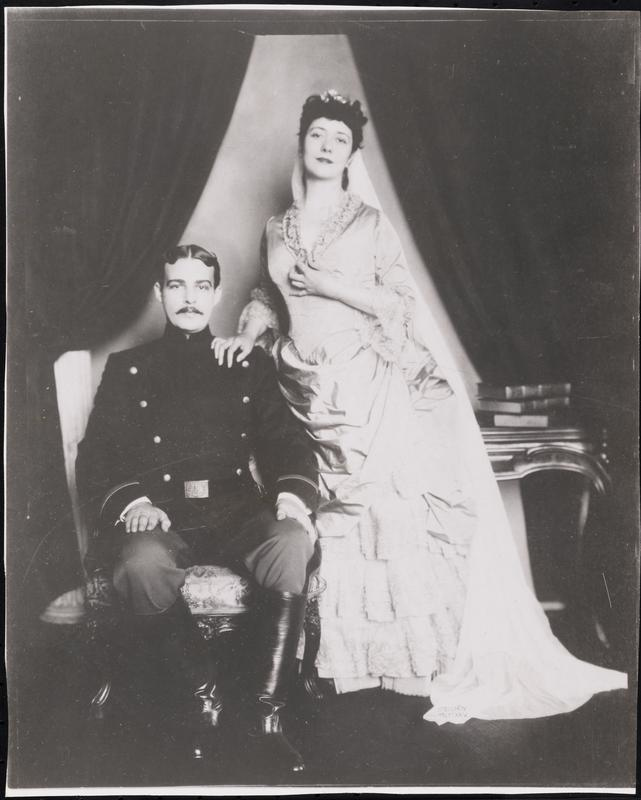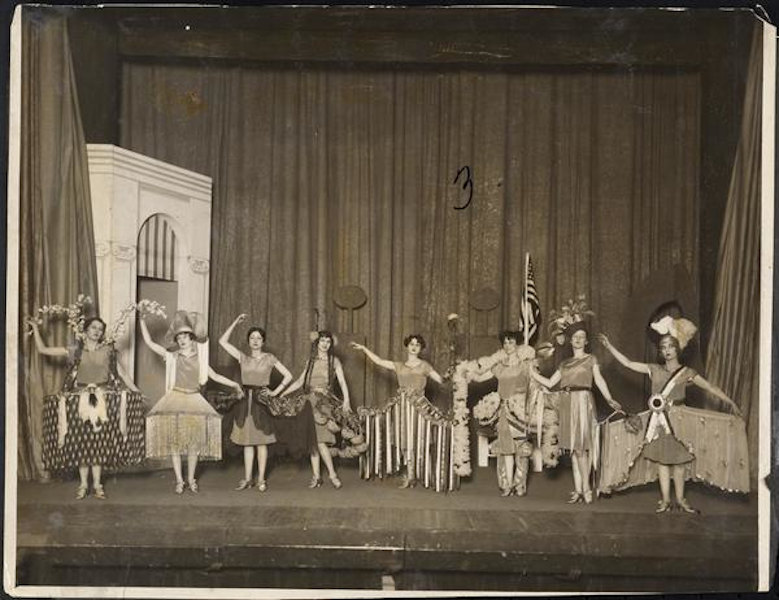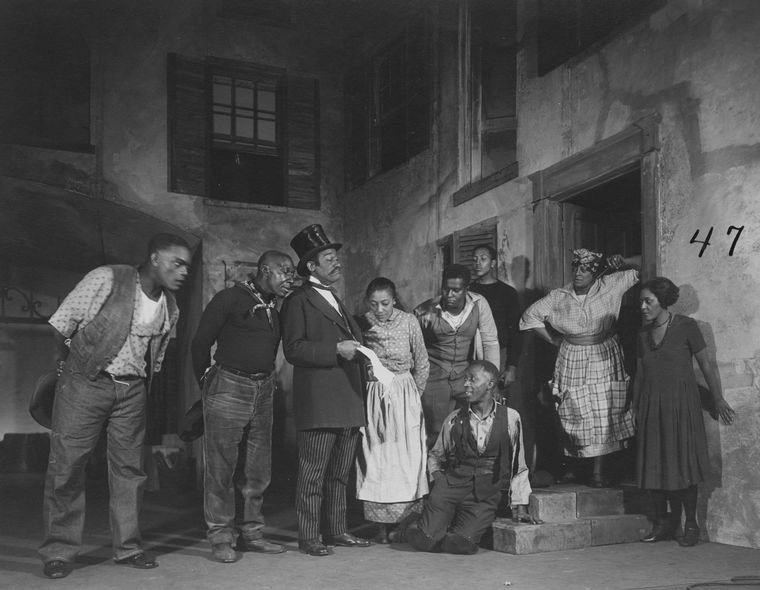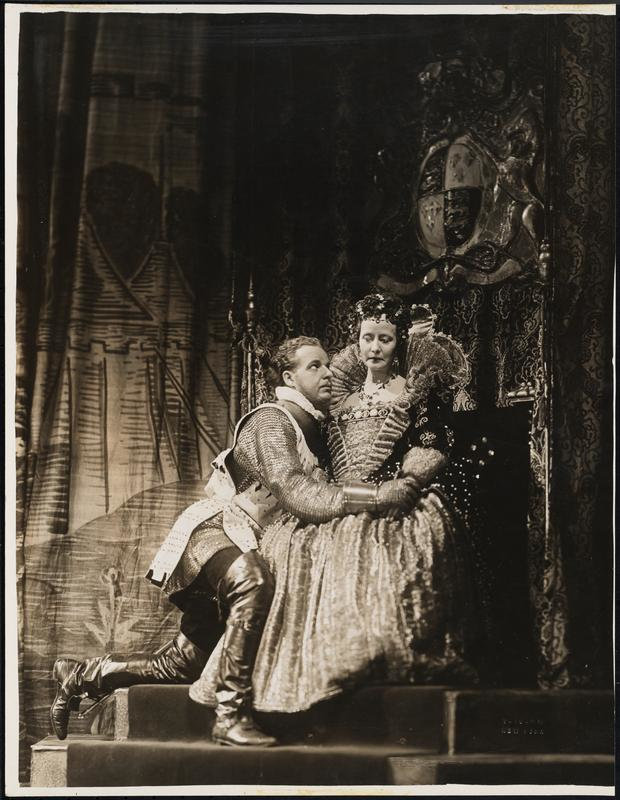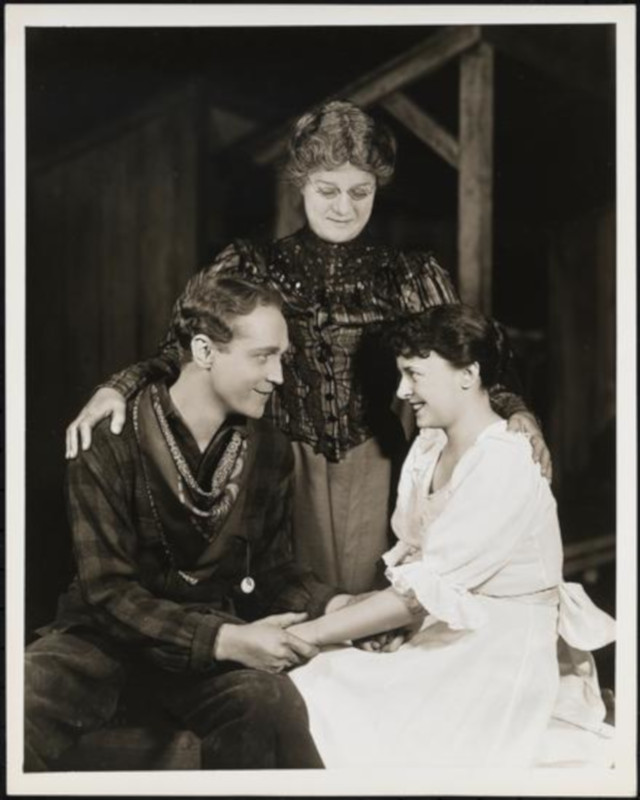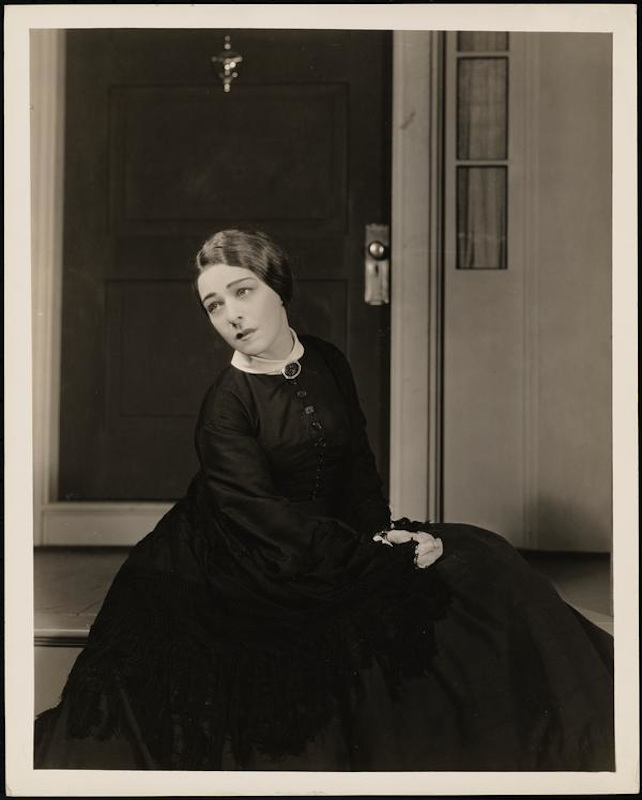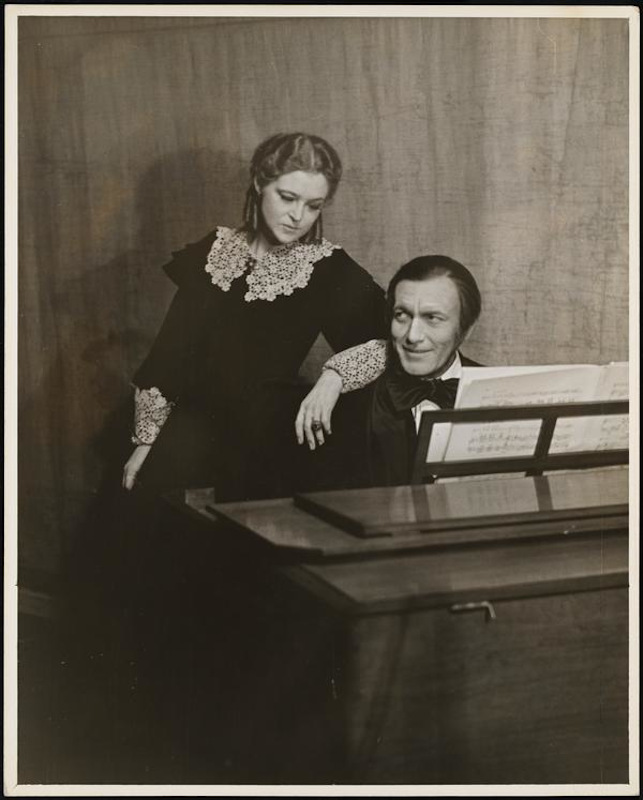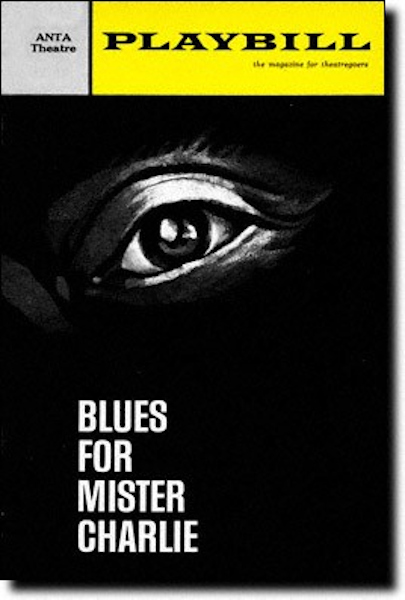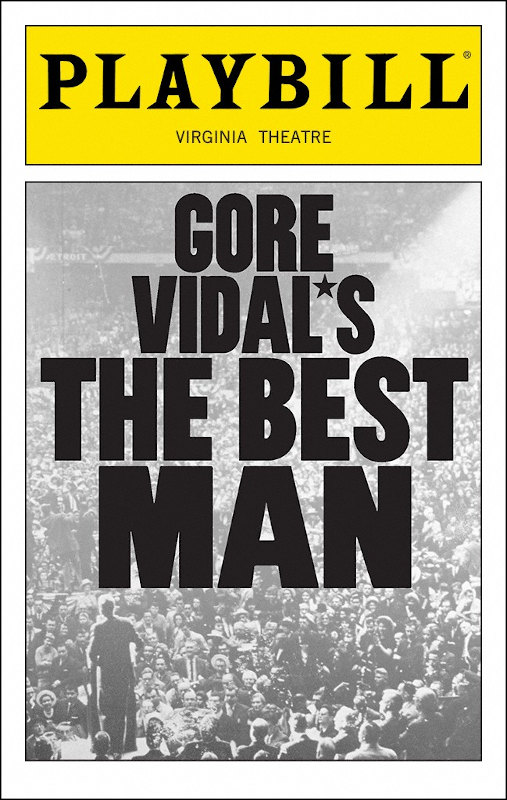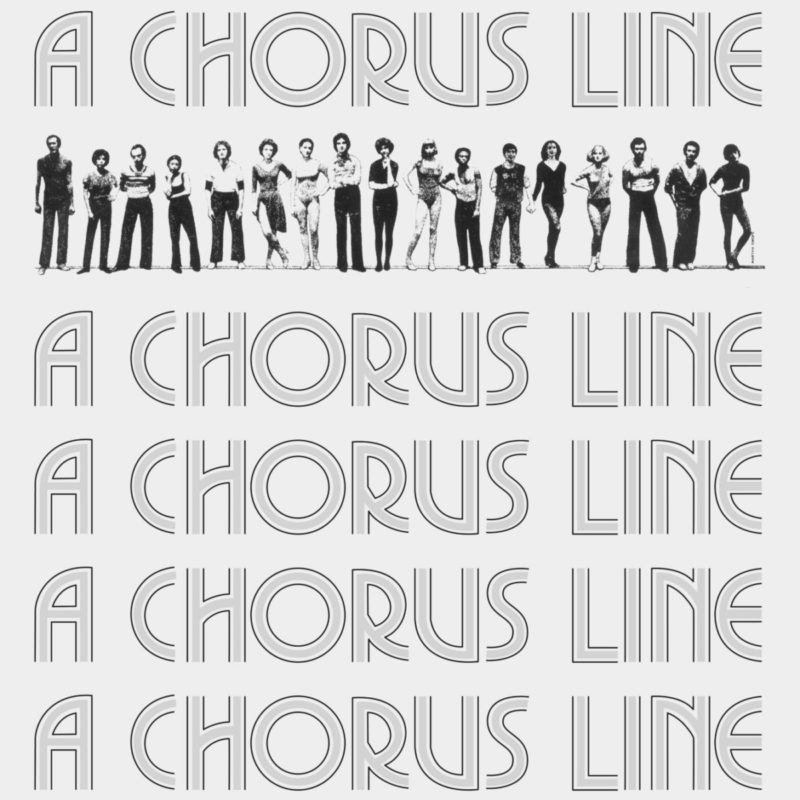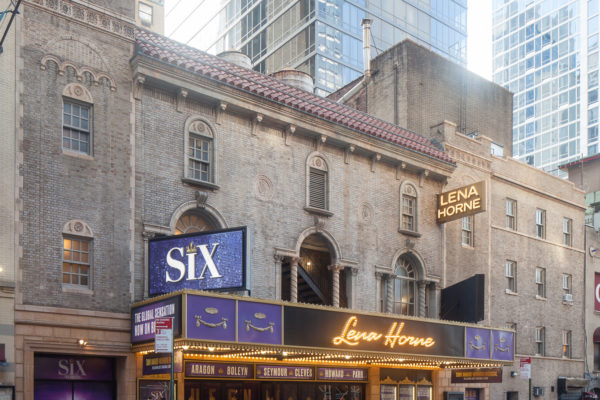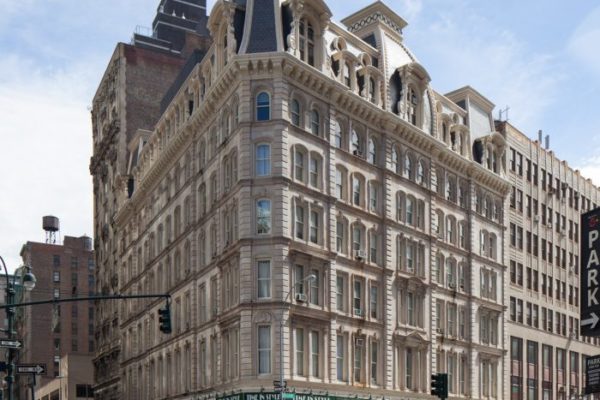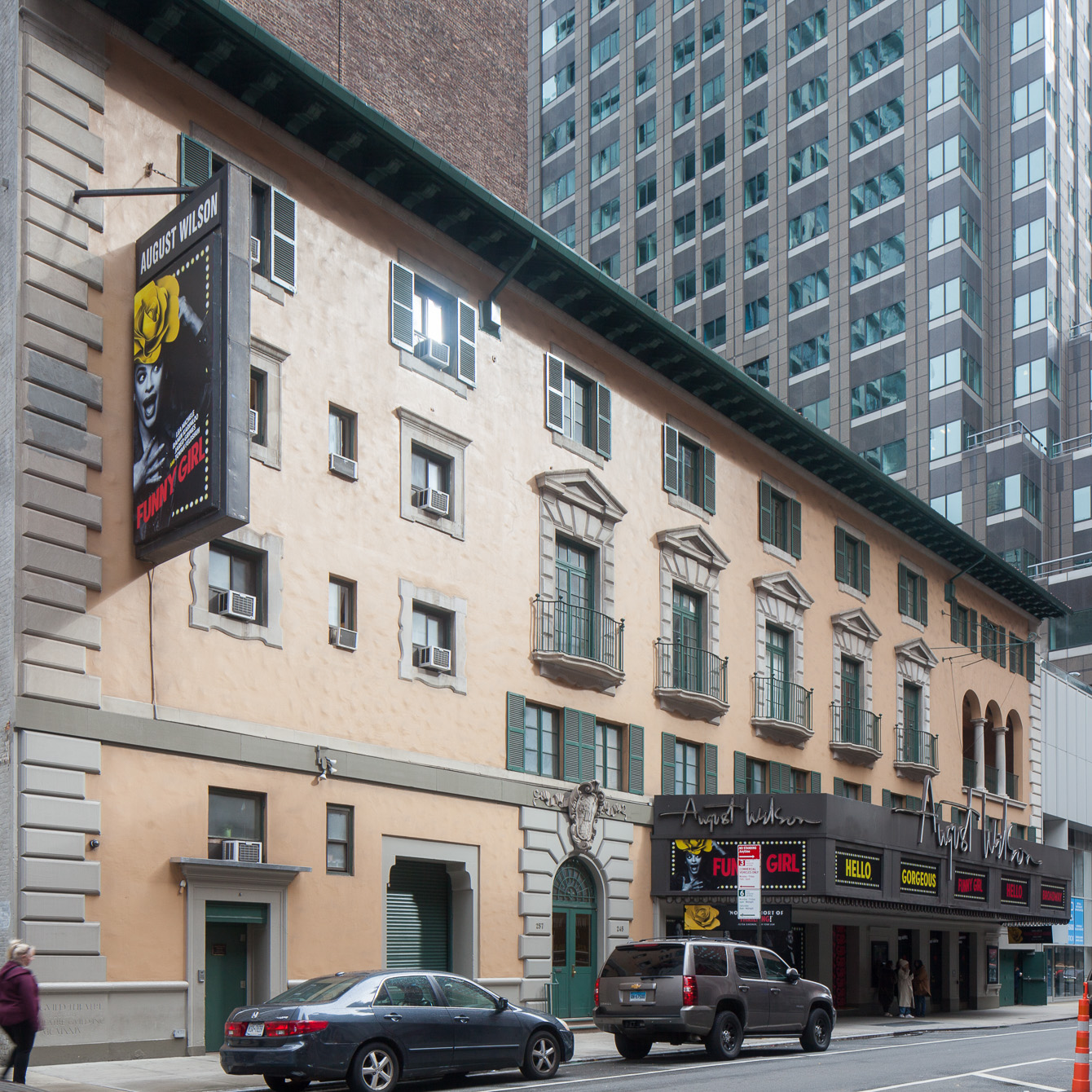
August Wilson Theater (originally Guild Theater)
after opening as the Guild Theater in 1925, this site was renamed the ANTA Playhouse in 1950, the Virginia Theater in 1981, and the August Wilson Theater in 2005
overview
Opened in 1925 as the Guild Theater and renamed the ANTA Playhouse in 1950 and the Virginia Theater in 1981, this venue staged multiple productions involving major LGBT performers and creators, including Alfred Lunt, Lynn Fontanne, Emlyn Williams, Mary Martin, Tyrone Power, Thornton Wilder, Lorenz Hart, Eva Le Gallienne, and Gore Vidal, among others.
The venue was renamed the August Wilson Theater in 2005.
On the Map
VIEW The Full MapHistory
Guild Theater
This venue opened as the Guild Theater in 1925. Alfred Lunt and Lynn Fontanne, a Broadway couple who had one of the most famous “lavender marriages” (a marriage in which one or both partners are gay) of their time, were heavily associated with the Guild Theater in its first decade.
Productions at the Guild by LGBT creators and with LGBT performers included:
- Arms and the Man (revival, 1925), with actors Alfred Lunt and Lynn Fontanne
- Garrick Gaieties (1926), with lyrics by Lorenz Hart
- The Goat Song (1926), with actors Alfred Lunt and Lynn Fontanne
- At Mrs. Bream’s (1926), with actors Alfred Lunt and Lynn Fontanne
- Pygmalion (revival, 1926-27), with actor Lynn Fontanne
- Juarez and Maximillian (1926), with actors Alfred Lunt and Sanford Meisner
- The Brothers Karamazov (1927), with actors Alfred Lunt and Lynn Fontanne
- The Second Man (1927), with actors Alfred Lunt and Lynn Fontanne
- The Doctor’s Dilemma (revival, 1927-28), with actors Alfred Lunt and Sanford Meisner
- Porgy (1927-28), with actor Georgette Harvey
- Marco Millions (1928), with actors Alfred Lunt and Sanford Meisner
- Volpone (1928) by Stefan Zweig, and with actors Alfred Lunt and Lynn Fontanne
- Caprice (1928-29), with actors Alfred Lunt and Lynn Fontanne
- Meteor (1929-30), with actors Alfred Lunt and Lynn Fontanne
- Elizabeth the Queen (1930-31), with actors Alfred Lunt and Lynn Fontanne
- Garrick Gaieties (revival, 1930) by and composed by Marc Blitzstein and others
- Green Grow the Lilacs (1931) by Lynn Riggs
- Mourning Becomes Electra (1931-32), with actor Alla Nazimova
- The Good Earth (1932), with actor Alla Nazimova
- Too Good to Be True (1932), with actors Beatrice Lillie and Hope Williams
- The Mask and the Face (revival, 1933), with actor Judith Anderson
- The Simpleton of the Unexpected Isles (1935), with actor Alla Nazimova
- The Taming of the Shrew (revival, 1935-36), with actors Alfred Lunt and Lynn Fontanne
- And Stars Remain (1936), with actor Clifton Webb
- Prelude to Exile (1936-37), with actor Eva Le Gallienne
- The Merchant of Yonkers (1938-39) by Thornton Wilder
- Jeremiah (1939) by Stefan Zweig
- Yesterday’s Magic (1942) by Emlyn Williams
ANTA Playhouse
After a time as a radio station, in 1950 this venue became the ANTA (American National Theatre and Academy) Playhouse. Productions by LGBT creators and with LGBT performers included:
- The Tower Beyond Tragedy (1950), with actor Judith Anderson
- The School for Wives (1951), with scenic and costume design by Christian Berard
- The Skin of Our Teeth (revival, 1955) by Thornton Wilder, with actor Mary Martin
- Seventh Heaven (1955), directed by John C. Wilson
- The Dark is Light Enough (1955), with scenic and costume design by Oliver Messel, with actors Katharine Cornell and Tyrone Power
- The Great Sebastians (1956), with actors Alfred Lunt and Lynn Fontanne
- Say, Darling (1958), with scenic design by Oliver Smith
- The Fighting Cock (1959-60), with actor Roddy McDowall (Best Featured Actor in a Play Tony Award)
- Jerome Robbins’ Ballet: U.S.A. (1961), choreographed by Jerome Robbins, with costume design by Irene Sharaff, and with dancer Tommy Abbott
- Big Fish, Little Fish (1961) by Hugh Wheeler, directed by John Gielgud (Best Direction of a Play Tony Award), and with actor George Grizzard
- Blues for Mr. Charlie (1964) by James Baldwin
- Traveller Without Luggage (1964), with scenic and costume design by Oliver Messel
- The Owl and the Pussycat (1964-65), with costume design by Florence Klotz
- The Royal Hunt of the Sun (1965-66) by Peter Shaffer, directed by John Dexter, and with actor George Rose
- Maggie Flynn (1968-69), with costume design by W. Robert LaVine, and lighting design by Tharon Musser, and with actor Jack Cassidy
- Our Town (revival, 1969) by Thornton Wilder
- The Last of Mrs. Lincoln (1972-73), with scenic design by William Ritman
- Cat on a Hot Tin Roof (revival, 1974-75) by Tennessee Williams
- Bubbling Brown Sugar (1976-77), choreographed by Billy Wilson
- First Monday in October (1978), with scenic design by Oliver Smith (opened at the Majestic Theater)
- A History of the American Film (1978), with scenic design by Tony Straiges
- Whoopee! (1979), with scenic design by John Lee Beatty
- Night and Day (1979-80), with actor Joseph Maher
- The Suicide (1980), with actor Derek Jacobi
Virginia Theater
In 1981, it was renamed the Virginia Theater. The biggest LGBT-associated hits were:
- On Your Toes (revival, 1983-84) by Richard Rodgers and Lorenz Hart, with lyrics by Hart (Best Reproduction Tony Award) and production design by Zack Brown
- City of Angels (1989-92), with costume design by Florence Klotz
- Jelly’s Last Jam (1992-93) by and directed by George C. Wolfe
- Smokey Joe’s Cafe (1995-2000), with costume design by William Ivey Long, and with actor Lesley Gore as a guest star
Other LGBT-associated shows at the Virginia included:
- Alice in Wonderland (revival, 1982-83) by Eva Le Gallienne and Florida Friebus, with scenic design by John Lee Beatty, and with actors Le Gallienne and Edward Hibbert
- Wild Honey (1986-87), with actor Ian McKellen
- My Fair Lady (revival, 1993-94), with actor Richard Chamberlain
- The Wild Party (2000) by George C. Wolfe and Michael John LaChiusa, directed by Wolfe, and with music and lyrics by LaChiusa
- The Best Man (revival, 2000) by Gore Vidal, with actor Jonathan Hadary
Entry by Jay Shockley, project director (June 2019, with multiple additions).
NOTE: Names above in bold indicate LGBT people.
Building Information
- Architect or Builder: C. Howard Crane & Kenneth Franzheim
- Year Built: 1924-25
Sources
Adam Hetrick, “The Work of Broadway’s Gay and Lesbian Artistic Community Goes on Display Nov. 14 When the Leslie/Lohman Gay Art Foundation Gallery Presents ‘StageStruck: The Magic of Theatre Design’,” Playbill, November 14, 2007.
ANTA Theater Designation Report (New York: Landmarks Preservation Commission, 1985).
Internet Broadway Database.
“The 1st List of: Gay/Lesbian/Bi Industry People, Both in Front and Behind the Camera,” www.imdb.com, May 31, 2013.
Do you have more information about this site?
This project is enriched by your participation! Do you have your own images of this site? Or a story to share? Would you like to suggest a different historic site?
